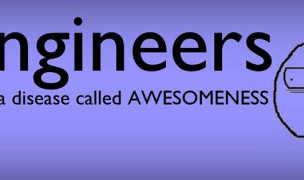 2 Terms
2 TermsHome > Terms > English (EN) > banks and banking
banks and banking
Banks traditionally are protectors and providers of money intermediaries between those who have money and want it protected and those who need money to purchase homes, grow businesses or fund education. Banks take deposits and transfer this money to borrowers as loans, earning the spread between the low-interest borrowed funds and the higher-interest lent funds. The Federal Reserve, the industry’s regulator, allows banks the special privilege of creating money by lending more than they receive in deposits. Hence, banking was and is a confidence business: the system works as long as depositors have confidence in a bank’s solvency. Lost confidence results in depositors demanding their money back—an ominous event of the Depression. Deposit insurance, provided by the FDIC (Federal Deposit Insurance Corporation) and FSLIC (Federal Savings and Loan Insurance Corporation), was created as a New Deal reform to prevent bank runs. It protects up to $100,000 of a depositor’s money when a bank goes under.
Despite Depression fears, the banker has been a symbol of local tradition. Often a town’s most prominent citizen, the banker was conservative, well-respected and often politically influential. Banking was once profoundly local, whether in small towns or major cities. Only locals, it was thought, could evaluate borrowers’ ability to repay “Banker’s hours”—09:00 to 15:00—were a technical requirement. While adjusting the books each day was an exhaustive manual process, the staid, leisurely reputation of the banker persisted (as in It’s a Wonderful Life (1946)).
American attitudes towards debt provided the impetus for the postwar growth of banking. European principles of thrift and avoidance of debt are ignored as Americans often prefer huge mortgages to tiny bank accounts. Home-equity loans even free up the value of one’s house to allow current spending. US households have over $5.5 trillion in outstanding debt.
Technology also has profoundly altered the banks’ and bankers’ role as intermediary smashed barriers to entry and prompted consolidation. Financial assets held by depository institutions have declined from 70 percent in 1932 to 40 percent in 1990. Much of this decline is explained by new institutions that provide savings and lending opportunities.
The consumer credit industry once a boon to banking, is now dominated by non-banking institutions. Credit cards provide a line of credit to individuals on which banks may earn healthy interest rates. By the mid-1980s, however, retailers (for example, Sears), phone companies (for example, AT&T) and manufacturers (for example, General Motors) had introduced credit cards, eliminating the bank as intermediary These firms sold their receivables in a burgeoning money market where firms sold debt to mutual funds and institutions, again bypassing banks.
Mortgage securitization, wherein a firm buys a portfolio of mortgages and packages them into diversified, saleable investments, removed other lucrative servicing and pricing opportunities that banks held. Starting in the early 1980s, investment banks like Salomon Brothers securitized over 70 percent of all mortgages (Crawford and Sihler 1991:138).
Banks now require fewer deposits and can extract fewer fees for services because loans are sold after origination. Mutual funds have embraced securitized debt. Money Market Mutual fund assets total $1 trillion, reducing the traditional savings account and bank certificate of deposit customer base.
Today, insurance companies offer investments, automobile manufacturers offer credit and third-party providers offer payroll and processing services. The banking industry has traditionally been restricted from business diversification by the Glass-Steagal Act of 1933, but deregulation and changing conditions have forced re-evaluation. The consolidation of banking, supported by loosened restrictions on interstate operations, has been the main focus of this restructuring. Chartered banks in the US have fallen from 13,124 in 1979 to 9,143 in 1997. The FDIC estimates there will be fewer than 5,000 US banks by 2005. Behemoths Nationsbank, Chemical and Corestates have merged with Bank of America, Chase Manhattan and First Union to eliminate operational redundancies and become more competitive. Citibank, Chase Manhattan, Bank of America and First Union have nearly $1 trillion in deposits, and operate from New England to California.
This often raises the specter of problems in urban or neighborhood finances as national banks go for maximum profits. The community bank has difficulty providing the services of a larger bank because its expenses are spread over a smaller asset base. Legislation, including the Community Reinvestment Act, requires banks to lend in the communities in which they operate, but does not promote autonomous financial planning for these areas.
Credit unions, which have acted as joint financial reserves for groups like teachers and government employees, have also been explored as a way to bring non-predatory financial services into low-income communities.
Banks now earn the majority of their income from fees, not the spread on deposits.
Banking is also done through technology-intensive phones or 24-hour automated tellers, more than through branch offices, reducing the need for personal interaction and providing economies of scale to large, centralized banks.
Savings and Loans (S&Ls) once held a unique place in the banking industry because they exclusively provided long-term, fixed-rate home mortgage loans. In the late 1970s, interest rates rose above 10 percent. S&Ls held portfolios of thirty-year mortgages earning as little as 5 percent, but had to pay double that to attract deposits. Additionally banks offered savings accounts. Real-estate loans, provided in the early 1980s, imploded when land prices declined. Regulators were slow to respond to problems—five US senators were even accused of using their influence to deflect attention from crooked financier Charles Keating. Deposit insurance provided a crutch as S&Ls across the country shut their doors, yet healthy S&Ls came under pressure as individuals lost confidence in the entire industry. Ultimately, the Resolution Trust Corporation was set up to bail out the S&L industry and recover some of the massive losses. It is estimated the S&L bailout cost the country $1 trillion.
The banking industry faces numerous challenges. Confidence in banking has declined in recent decades. Banks must improve services at lower prices and still remain competitive with other service providers. In order to survive, banks and other financial institutions must continue to reinvent themselves.
- Part of Speech: noun
- Synonym(s):
- Blossary:
- Industry/Domain: Culture
- Category: American culture
- Company: Routledge
- Product:
- Acronym-Abbreviation:
Other Languages:
Member comments
Terms in the News
Billy Morgan
Sports; Snowboarding
The British snowboarder Billy Morgan has landed the sport’s first ever 1800 quadruple cork. The rider, who represented Great Britain in the 2014 Winter Olympics in Sochi, was in Livigno, Italy, when he achieved the man-oeuvre. It involves flipping four times, while body also spins with five complete rotations on a sideways or downward-facing axis. The trick ...
Marzieh Afkham
Broadcasting & receiving; News
Marzieh Afkham, who is the country’s first foreign ministry spokeswoman, will head a mission in east Asia, the state news agency reported. It is not clear to which country she will be posted as her appointment has yet to be announced officially. Afkham will only be the second female ambassador Iran has had. Under the last shah’s rule, Mehrangiz Dolatshahi, a ...
Weekly Packet
Language; Online services; Slang; Internet
Weekly Packet or "Paquete Semanal" as it is known in Cuba is a term used by Cubans to describe the information that is gathered from the internet outside of Cuba and saved onto hard drives to be transported into Cuba itself. Weekly Packets are then sold to Cuban's without internet access, allowing them to obtain information just days - and sometimes hours - after it ...
Asian Infrastructure Investment Bank (AIIB)
Banking; Investment banking
The Asian Infrastructure Investment Bank (AIIB) is an international financial institution established to address the need in Asia for infrastructure development. According to the Asian Development Bank, Asia needs $800 billion each year for roads, ports, power plants or other infrastructure projects before 2020. Originally proposed by China in 2013, a signing ...
Spartan
Online services; Internet
Spartan is the codename given to the new Microsoft Windows 10 browser that will replace Microsoft Windows Internet Explorer. The new browser will be built from the ground up and disregard any code from the IE platform. It has a new rendering engine that is built to be compatible with how the web is written today. The name Spartan is named after the ...
Featured Terms
pica
Pica is a disorder characterized by an appetite for substances largely non-nutritive (clay, sand, metalic objects...etc etc). For these actions to be ...
Contributor
Featured blossaries
Browers Terms By Category
- World history(1480)
- Israeli history(1427)
- American history(1149)
- Medieval(467)
- Nazi Germany(442)
- Egyptian history(242)
History(6037) Terms
- Muscular(158)
- Brain(145)
- Human body(144)
- Developmental anatomy(72)
- Nervous system(57)
- Arteries(53)
Anatomy(873) Terms
- Nightclub terms(32)
- Bar terms(31)
Bars & nightclubs(63) Terms
- Authors(2488)
- Sportspeople(853)
- Politicians(816)
- Comedians(274)
- Personalities(267)
- Popes(204)
People(6223) Terms
- Poker(470)
- Chess(315)
- Bingo(205)
- Consoles(165)
- Computer games(126)
- Gaming accessories(9)




